Hiring a college football coach is an inexact science, and the following list provides the proof. This collection features the top 25 college football coaching hires of the past 25 years, a group defined by variety as much as greatness.
Nick Saban and Urban Meyer both were can't-misses who hit the mark, at multiple schools. But for every Saban and Meyer, there are moves like Clemson handing over its program to a 39-year-old career wide receivers coach named Dabo Swinney, one of seven internal promotions who appear on the list.
Jim Harbaugh was a big-name player but a relatively unproven coach when he came to Stanford. Pete Carroll couldn't break through with two NFL teams before USC gave him a chance. Jim Tressel had led only FCS school Youngstown State before getting his chance at Ohio State.
There's no perfect path to a great coaching hire.
Here are the top 25 coaching hires since 1995. The list primarily considers a coach's success at a program, but also what situation he walked into. Remember, the hires are being evaluated here, so a coach can appear more than once. As a result, a lot of excellent coaches didn't make the rundown. I generally rewarded longevity, although several coaches here worked wonders in a short time.
Let's get started.

25. Bill O'Brien, Penn State
Hired: Jan. 7, 2012
What he inherited: An unprecedented mess. The Jerry Sandusky child sex abuse scandal had rocked Penn State, leading to the ouster of program icon Joe Paterno, who died of cancer on Jan. 22, 2012. Investigations began, and in July the NCAA imposed major penalties, including a postseason ban and scholarship losses.
What happened next: O'Brien had the shortest tenure of any coach on this list and went only 15-9. But he stabilized the program at a critical point and overcame a series of unique obstacles and constant tension to help Penn State far exceed the gloomy post-sanctions predictions. A first-time head coach, O'Brien had to navigate complicated challenges around Paterno's legacy, the roster and the NCAA penalties, which allowed other teams to recruit his players. He won national coach of the year honors in 2012, as Penn State went 6-2 in Big Ten play. His work that fall and in 2013 prevented a collapse and helped set up successor James Franklin, who won the Big Ten in 2016 and has 42 wins and three top-10 finishes in the past four seasons.

24. Mike Gundy, Oklahoma State
Hired: Jan. 3, 2005
What he inherited: Oklahoma State had had just one Associated Press Top 25 finish (No. 24 in 1997) and four bowl appearances since 1988. The Cowboys had not won even a share of a conference title since 1976.
What happened next: Gundy, a former Oklahoma State quarterback and a Cowboys assistant since 2001, would oversee the most consistent stretch since the mid-1980s. From 2008 to 2017, Oklahoma State averaged 9.6 wins per season with six 10-win campaigns. The Cowboys ended their league title drought in 2011 and nearly made the BCS Championship Game before winning the Fiesta Bowl to post their highest-ever AP finish (No. 3), and their first top-5 finish since 1945. Gundy is 129-64 overall with seven AP top-20 finishes and nine bowl wins. Although he owns only one league title and has struggled against rival Oklahoma, he provided the stability Oklahoma State had struggled to sustain.
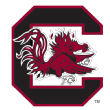
23. Steve Spurrier, South Carolina
Hired: Nov. 23, 2004
What he inherited: A program that had missed bowl games in three consecutive seasons and recorded Top 25 finishes just twice since entering the SEC in 1992. South Carolina had won more than seven games only twice as an SEC member.
What happened next: That South Carolina could land a coach like Spurrier, especially given his legacy in the SEC, was huge for the program. Spurrier in Year 1 led South Carolina to its first-ever win at Tennessee and its first over Florida since 1939. He took a while to get rolling, averaging seven wins during his first five seasons. But after going 9-5 in 2010 with a division title and a No. 22 finish, Spurrier sparked South Carolina to the best stretch in team history, as the Gamecocks went 33-6 with three top-10 finishes from 2011 to 2013. Spurrier added one division title and two more SEC coach of the year awards to his Hall of Fame career with the Gamecocks, going 86-49 overall.

22. Kyle Whittingham, Utah
Hired: Dec. 8, 2004
What he inherited: Whittingham, a Utes assistant since 1994, had served as defensive coordinator when the program took off under Urban Meyer. Utah had had only one 10-win season between 1905 and 2002 but went 10-2 in 2003 and then 12-0 in 2004, winning the Fiesta Bowl to finish No. 4 nationally.
What happened next: The Meyer hire proved excellent, but Utah's decision to promote Whittingham, who turned down his alma mater BYU, propelled the program into a historic period of success. After three decent years, Whittingham led Utah to another undefeated season in 2008, capped by a Sugar Bowl win over Alabama and a No. 2 final ranking. Two more 10-win seasons followed before Utah moved into the Pac-12, where, after a slow start, it has claimed three South division titles, five seasons of nine or more wins in the past six, and four Top 25 finishes in the CFP era. Whittingham is 131-64 at Utah and won both national and league coaching awards while the Utes played in both the Mountain West and Pac-12.

21. James Franklin, Vanderbilt
Hired: Dec. 17, 2010
What he inherited: Vanderbilt had made just one bowl appearance in the previous 28 years and hadn't recorded consecutive winning seasons since 1974 and 1975. The Commodores had won three games or fewer 21 times between 1976 and 2010.
What happened next: Franklin is best known for his work at Penn State, which won the Big Ten in 2016 and has 42 wins in the past four years. But he faced steeper obstacles at Vanderbilt, a longtime SEC bottom feeder. Franklin guided Vanderbilt to six wins and a Liberty Bowl appearance in 2011. The Commodores then went 9-4 in 2012, recording their longest win streak (seven) since 1948, their highest win total since 1915 and their first end-of-season ranking since 1948. Vanderbilt reached consecutive bowl games for the first time in team history. It then followed with another nine-win season in 2013, and had consecutive Top 25 finishes for the first time. Vandy hasn't won more than six games in a season since Franklin left.

20. Jimbo Fisher, Florida State
Hired: Jan. 5, 2010
What he inherited: FSU had started to slip, winning more than eight games just once in Bobby Bowden's final five seasons. The team of the 1990s had not finished higher than No. 11 since 2000 and had one 10-win season between 2001 and 2009.
What happened next: Fisher followed a coaching icon (never easy) and quickly boosted the program, as the Seminoles went 10-4 in his first season. From 2012 to 2016, FSU went 59-9 with four top-10 finishes, three ACC titles, four division championships, a national title in 2013 and a CFP appearance the following year. A first-time head coach, Fisher oversaw one of the nation's best recruiting operations despite not having the same resources as some of his top competitors. Things didn't end well in Tallahassee, and FSU has struggled since his departure. But Fisher went 83-23 with the Seminoles and lost only six ACC games in his first five seasons.

19. Gary Pinkel, Missouri
Hired: Nov. 29, 2000
What he inherited: Missouri had had just two winning seasons since 1983 and had not won more than eight games since 1969. The Tigers had won only two conference titles since 1945 and hadn't eclipsed nine wins since 1960.
What happened next: Pinkel's work at Missouri likely doesn't get the full national recognition it deserves. Between 2007 and 2014, he led Missouri to five 10-win seasons, five top-20 finishes, two top-5 finishes and, most impressive, five championship game appearances (three Big 12, two SEC). After going 5-7 in its first SEC season, Missouri won the East Division in consecutive seasons and finished both with notable bowl wins (Cotton, Citrus). Missouri regularly produced first-round draft picks under Pinkel, whose teams finished second or better in their division eight times between 2005 and 2014.

18. David Cutcliffe, Duke
Hired: Dec. 14, 2007
What he inherited: The worst Power 5 program, a total afterthought at a basketball-centric school. The Blue Devils won three games total from 2005 to 2007 and had three winless campaigns between 2000 and 2007. Duke hadn't had a winning season or made a bowl since 1994, and only once won more than four games.
What happened next: Cutcliffe won nine games in his first two years, one more than Duke's total from 2003 to 2007. After losing records in his first four seasons, Cutcliffe guided Duke to four consecutive bowl appearances, highlighted by a division title, 10 wins and a No. 23 final finish in 2013. Cutcliffe swept the national coaching awards that season and won his second straight ACC coach of the year honor. Since 2012, Duke has made bowl appearances in six of eight seasons, after reaching just eight total bowls before Cutcliffe arrived. Cutcliffe also has continued to develop quarterbacks, as Daniel Jones went No. 6 overall in the 2019 NFL draft.
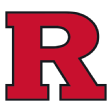
17. Greg Schiano, Rutgers
Hired: Dec. 1, 2000
What he inherited: A national laughingstock. Despite being located in a good recruiting area, Rutgers couldn't get out of its own way. The Scarlet Knights had one bowl appearance in their history, in 1978, and just two winning seasons since 1980.
What happened next: Schiano went 3-20 in his first two seasons and endured four losing campaigns, but he eventually made Rutgers into a winner. After a bowl breakthrough in 2005, Rutgers briefly entered the national spotlight in 2006, winning 11 games and finishing No. 12 in the final polls. Rutgers won eight or more games in five of Schiano's final six seasons as coach. He recorded the first five bowl wins in team history and swept the national coaching honors in 2006. Rutgers' seemingly improbable move to the Big Ten almost certainly wouldn't have happened without the football upgrades Schiano oversaw during his first go-round in Piscataway.

16. Jim Harbaugh, Stanford
Hired: Dec. 18, 2006
What he inherited: Stanford had fallen off sharply since Tyrone Willingham departed for Notre Dame, going 16-40 under Buddy Teevens and Walt Harris with no bowl appearances and only 10 victories in Pac-10 play. The Cardinal had not won 10 games since 1992.
What happened next: Despite just five years of coaching experience -- none at the FBS level -- Harbaugh dramatically changed Stanford's trajectory with a bold approach. After a historic upset of 41-point favorite USC in 2007, Harbaugh improved Stanford's win total in each of his four seasons, culminating with a 12-1 breakthrough and a No. 4 finish in 2010. He won the Woody Hayes Trophy, awarded to the top college coach, in 2010. Harbaugh set up Stanford for the best stretch in team history, as successor David Shaw won 10 or more games in five of six seasons between 2011 and 2016, recording five top-12 finishes, three league titles and two Rose Bowl wins.
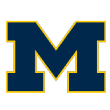
15. Lloyd Carr, Michigan
Hired: Nov. 13, 1995 (named interim coach on May 13, 1995)
What he inherited: Michigan was a consistent top-10 team during the Bo Schembechler-Gary Moeller transition, but came off consecutive 8-4 seasons. Moeller resigned in May 1995 after his arrest for a drunken incident at a restaurant. Michigan's national title drought, meanwhile, had reached 47 years.
What happened next: Carr, a longtime Michigan assistant with no college head-coaching experience, led the Wolverines to the national title in his second full season as permanent coach. Michigan claimed at least a share of the Big Ten title in three of four seasons between 1997 and 2000, and would win five conference championships under Carr. The Wolverines posted four AP top-10 finishes and eight top-15 finishes under Carr, whose teams were ranked for all but nine games and finished ranked in 12 of his 13 seasons. Carr struggled against Ohio State during the second half of his tenure but still went 6-7 against the Buckeyes. (Michigan has just one win since.)

14. Mark Dantonio, Michigan State
Hired: Nov. 27, 2006
What he inherited: A wayward program that had endured three consecutive losing seasons and recorded just two winning seasons since 1999. MSU had just six Top 25 finishes since 1966 and had lost five straight to Michigan.
What happened next: Dantonio brought consistent leadership and an emphasis on player development. He capitalized on Michigan's instability and led MSU to a 7-1 record in the series between 2008 and 2015. After a nine-win season in 2008 -- MSU's highest wins total since 1999 -- Dantonio would lead MSU on its most successful stretch since the mid-1960s. Between 2010 and 2015, Michigan State won 11 or more games five times, recorded five top-15 finishes and three top-six finishes, won three Big Ten titles and reached the CFP in 2015. Dantonio handed Urban Meyer his first two Big Ten losses at Ohio State. Things didn't end well for Dantonio, but he dramatically changed MSU's trajectory.

13. Brian Kelly, Notre Dame
Hired: Dec. 10, 2009
What he inherited: The Irish went 16-21 in the final three years of Charlie Weis' tenure and had recorded only two 10-win seasons since 1993, when they finished No. 2 overall. Notre Dame had never made the BCS national title game and had just snapped a nine-year bowl losing streak.
What happened next: Kelly created the type of stability Notre Dame struggled to achieve after Lou Holtz had left town. The team's flops in the BCS title game (2012 season) and CFP (2018 season) shouldn't minimize Kelly guiding the Irish to five 10-win seasons, six top-20 finishes and 9.2 wins per season with only one year of fewer than eight victories. After the one disastrous season (4-8 in 2016), Kelly made important changes to the staff and how he runs the program. Since 2017, Notre Dame ranks sixth nationally in winning percentage (.846). A two-time AP national coach of the year, Kelly doesn't dance around Notre Dame's national championship ambitions and knows there's work to do there. But he has put the program in position to challenge the nation's best.

12. Chip Kelly, Oregon
Hired: March 31, 2009
What he inherited: A consistent program from Mike Bellotti, under whom Kelly had coached for two seasons before his promotion. Oregon won 19 games in the two seasons when Kelly served as offensive coordinator, although the Ducks had not won the Pac-10 since 2001.
What happened next: Although Kelly had never coached at the FBS level before coming to Oregon, he immediately sparked the program on a historic run. Oregon won the Pac-10 in his first three seasons as coach, and two Rose Bowl appearances (1-1) sandwiched a run to the BCS national title game in 2010. Kelly's offense and unique philosophy style fit perfectly at Nike-backed Oregon, which became a national envy during his four seasons. Kelly went 46-7 overall and 33-3 in league play, never losing a rivalry game and recording top-four finishes in each of his final three seasons. He won Pac-12 Coach of the Year honors in his first two seasons and claimed most of the national coaching honors in 2010.
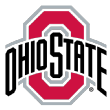
11. Jim Tressel, Ohio State
Hired: Jan. 18, 2001
What he inherited: A historically elite program that had started to slip, especially against its archrival. Ohio State went 14-10 in John Cooper's final two seasons and had dropped five of its previous six games against Michigan. Cooper went just 2-10-1 against the Wolverines.
What happened next: Tressel, who had guided FCS (then Division I-AA) school Youngstown State to four national titles, quickly restored Ohio State as a championship-level program. He beat Michigan in his first season, fulfilling his famous introductory pledge, and then in 2002 guided Ohio State to its first AP national championship since 1968 and its first undefeated season since 1970. Although Tressel didn't win another national title, he dominated both the Big Ten (seven outright or shared titles) and Michigan (8-1 record). His teams finished in the top five in seven of his final nine seasons.
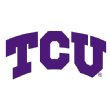
10. Gary Patterson, TCU
Hired: Dec. 8, 2000
What he inherited: TCU was on the rise under Dennis Franchione (Patterson served as Franchione's defensive coordinator), but had not logged a top-10 finish since 1959. The Horned Frogs reached only three bowl games between 1959 and Franchione's arrival in 1998.
What happened next: There's a reason Patterson's statue stands outside TCU's Schollmaier Arena. He's the most significant figure in modern program history, ushering TCU from Conference USA to the Mountain West and eventually to the Big 12, where his teams recorded three top-10 finishes in a four-year span with a conference co-championship in 2014. Patterson has coached TCU to six top-10 finishes, six league titles in three different leagues, a perfect season in 2010 that culminated with a Rose Bowl win, and 11 10-win seasons. He is a two-time national coach of the year, and won league coach of the year honors in Conference USA, the Mountain West and the Big 12.

9. Mack Brown, Texas
Hired: Dec. 5, 1997
What he inherited: An underachieving program that recorded more than eight wins just twice in the previous 14 seasons. Texas had not recorded a top-10 finish since 1983, and had not won an AP national title since 1969.
What happened next: Brown made an immediate impact on The Forty Acres, winning nine games in each of his first three seasons before an incredible run from 2001 to 2009. Texas won at least 10 games in each of those nine seasons, the third-longest in FBS history. He recorded seven top-10 finishes, captured two Big 12 titles, six division titles, 10 bowl wins and the national championship in 2005. Brown won national coaching honors in 2005 and 2008. He upgraded Texas' recruiting and coached 54 All-Americans. His 158 wins marked the fourth-most in the nation from 1998 to 2013.

8. Chris Petersen, Boise State
Hired: Dec. 16, 2005
What he inherited: Dan Hawkins left the program in good shape, as Boise State went 45-7 with three top-16 finishes between 2002 and 2005. The Broncos had dominated the WAC, going 37-3 with four league titles under Hawkins.
What happened next: Petersen, who had served as offensive coordinator under Hawkins, took a very good Group of 5 team and made it into a nationally relevant one, showing just how high a program like Boise State could rise. He led the Broncos to a 13-0 record in his debut season, culminating with a memorable Fiesta Bowl upset of Oklahoma and a No. 5 AP poll finish. Petersen recorded three more AP top-10 finishes and won 10 or more games in each of his first seven seasons. He won national coaching honors in 2006, 2009 and 2010, when Boise State was positioned for a potential BCS title game berth before a late November loss at Nevada. Petersen went 92-12 at Boise State with two undefeated seasons.

7. Nick Saban, LSU
Hired: Nov. 30, 1999
What he inherited: The 1990s had not been kind to LSU, which posted losing seasons seven times (!) and failed to finish higher than No. 12 nationally. LSU had just two SEC titles (one outright, one shared) since 1970, and no national titles since 1958.
What happened next: Saban made an immediate impact on the Bayou, as LSU's wins total improved by five in his first season (8-4). In 2001, he coached the Tigers to an SEC championship, a Sugar Bowl win and a No. 7 AP finish. Two years later, LSU won the BCS national championship and set a team record with 13 wins. Saban won multiple national coaching honors in 2003, as LSU posted its highest AP poll finish since 1959 (2). He went 48-16 at LSU and 28-12 in SEC play. Although Saban spent only five seasons in Baton Rouge, he elevated the program on both a regional and national level. LSU has won eight or more games in every season since Saban left Baton Rouge.
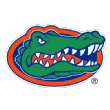
6. Urban Meyer, Florida
Hired: Dec. 4, 2004
What he inherited: A Florida program that, not surprisingly, had backslid after Steve Spurrier's departure. The Gators went 23-14 under Ron Zook with only one AP Top 25 finish in three years.
What happened next: Florida outmaneuvered Notre Dame for Meyer, by far the biggest prize in the post-2014 season coaching carousel. After a 22-2 run at Utah, Meyer immediately engineered progress in Gainesville, as Florida went 9-3 in 2005 and finished No. 12 nationally. He then began a historic four-year run that included national championships in 2006 and 2008, three 13-win seasons and three AP top-3 finishes. Meyer went 5-1 in bowls at Florida and 16-2 against rivals Georgia, Tennessee and Florida State. His tenure didn't end well, but Florida certainly got what it wanted out of the hire.

5. Urban Meyer, Ohio State
Hired: Nov. 28, 2011
What he inherited: A scandal-scarred program that had made a coaching change on Memorial Day 2011, and that fall recorded its highest regular-season loss total (six) since 1988. Weeks after Meyer's hiring, Ohio State received a postseason ban for the 2012 season.
What happened next: The looming ban didn't deter Meyer, who led Ohio State to a 12-0 record and a No. 3 finish in 2012. He started his Buckeyes career with 24 consecutive victories before stumbling in the 2013 postseason. Meyer followed by guiding Ohio State to a national title in the inaugural year of the CFP, behind third-string quarterback Cardale Jones. Although he didn't win a second championship, Meyer dominated both the Big Ten (54-4 record, three league titles, seven division titles) and archrival Michigan (7-0 record). Ohio State finished in the top six in six of Meyer's seven seasons and won four major bowl games.

4. Bob Stoops, Oklahoma
Hired: Dec. 1, 1998
What he inherited: A program coming off three consecutive losing seasons, four bowl-less seasons and five seasons without a Top 25 finish. The Sooners had not finished higher than No. 14 nor had won a conference title since 1987, Barry Switzer's penultimate season as coach.
What happened next: Stoops' roots with Spurrier, Bill Snyder and Hayden Fry prepared him well for his first head-coaching opportunity. He went 7-5 in his first year but won at least eight games in every subsequent season at OU. In 2000, Stoops guided Oklahoma to its first national championship since 1985. The Sooners began a run of five straight top-6 finishes, and they would post 11 top-eight finishes under Stoops. A six-time Big 12 coach of the year, Stoops won 10 conference titles and went 121-29 in league games. He's the only coach in the BCS era to win all four major bowls (Rose, Fiesta, Sugar, Orange). Stoops lost only nine home games in his tenure. During his final 17 years, Oklahoma led the Power 5 in total wins (183).

3. Pete Carroll, USC
Hired: Dec. 15, 2000
What he inherited: USC had missed bowls in four of the previous five seasons and posted only two Top 25 finishes since 1990. The Trojans had not won a national title since 1978 and last owned the Pac-10 title outright in 1989.
What happened next: Carroll wasn't USC's top choice, but he proved to be the right choice for a school seeking success and swagger. He quickly made USC the best and most exciting program in college football, embracing Hollywood and capitalizing on a market without an NFL franchise. After a 6-6 start in 2001, USC began a historic seven-year stretch that included: two AP national championships (one BCS), five Pac-10 championships, four Rose Bowl wins, an Orange Bowl win, an 82-9 record, a team-record 34-game win streak, seven AP top-four finishes and three Heisman Trophy winners. Carroll went 14-2 against rivals Notre Dame and UCLA, and had a 25-1 record in November.

2. Dabo Swinney, Clemson
Hired: Dec. 1, 2008 (named interim coach on Oct. 13, 2008)
What he inherited: A decent but underperforming program, which had lost at least four games in 14 of the previous 15 seasons. Clemson had not won the ACC since 1991, and had posted only two AP top-10 finishes since the national title season of 1981.
What happened next: Swinney upgraded Clemson into college football's latest superpower. After a 15-12 start, Clemson began a stretch of nine consecutive 10-win seasons with its first ACC title under Swinney, who lacked experience as a head coach or coordinator before his promotion. Since 2015, Clemson has appeared in four of five CFP title games, winning championships over Saban's Alabama teams in 2016 and 2018. Swinney has won national coaching awards in four different seasons and boasts a 130-31 mark at Clemson with five consecutive ACC titles and top-four finishes. Clemson leads the FBS in wins during the CFP era (79).
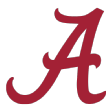
1. Nick Saban, Alabama
Hired: Jan. 3, 2007
What he inherited: Alabama had recorded more losing seasons (four) than top-10 finishes (three) since Gene Stallings resigned following the 1996 campaign. The Crimson Tide owned just one conference title since their most recent national title in 1992.
What happened next: Athletic director Mal Moore's relentless pursuit of Saban paid off, as Alabama landed a coach who not only would win championships but also would build the definitive program of the time. A 7-6 debut in 2007 marks the only season Saban's team hasn't won 10 or more games or finished in the AP top 10. Saban led Alabama to three national championships during a four-year span (2009, 2011, 2012) and has added titles in 2015 and 2017. Alabama has won eight SEC titles and 10 West Division titles under Saban, a four-time SEC coach of the year who lost one or zero league games 10 times at the school. The Tide reached four consecutive CFP national title games from 2015 to 2018. Saban and Bear Bryant are the only coaches to win six national titles during the AP poll era.
Honorable mentions
Scott Frost, UCF; Kirk Ferentz, Iowa; Bill Clark, UAB; David Shaw, Stanford; James Franklin, Penn State; Mike Leach, Washington State; Rich Rodriguez, West Virginia; Matt Rhule, Baylor; Ed Orgeron, LSU; Joe Tiller, Purdue
